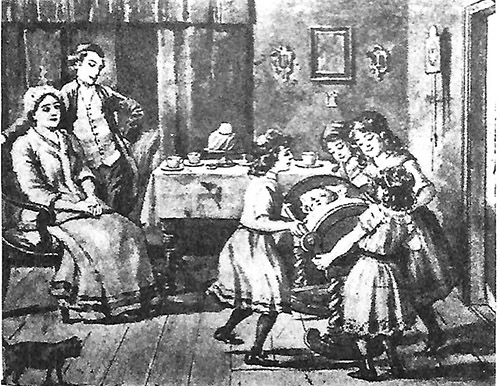
Part 2
(continued from last week)
In Sephardic communities there is a tradition of welcoming girls with a celebration called “Zeved Habat” or gift of the daughter. The name of the ceremony derives from our matriarch Leah after the birth of Zevulun “Zevedani Elohim oti zeved tov” or “God has granted me a gift.” I will leave further comments on the Sephardic custom to Rabbi Haim Jachter whose column in The Jewish Link I always enjoy reading, and who knows much more on the subject.
According to some of the reports, the tradition of a cradle ceremony greeting the birth of girls, (and boys?) was common in Southern Germany, Bavaria, the Rhineland and Alsace until the beginning of Nazism.
By the 17th century the custom had been dropped by urban Jews but it was still practiced in small towns and rural areas. In later times the custom spread to southern Holland and to what is now Switzerland.
Maybe that is the reason why I, living in an urban area, had never heard of Hollekreisch.
We all know of the custom practiced now in most communities of the father having an aliyah on the Shabbat following the birth of a girl with a blessing for the health of the mother and the announcement of the girl’s name. Rabbi Yaakov Emden included a text in his siddur.
Starting in the 20th century new ceremonies have evolved for naming new baby girls. These ceremonies are commonly known as simchat bat or a brit bat.
During medieval times girls were named during shavua habat (week of the daughter).
Some so called authorities, go so far as mixing up the Wimpel ceremony (see my column a few months ago in The Jewish Link) with the baby girl naming ceremony. They allege that the mother of the girl walked to shul with the Rabbi’s wife “and donated a wrapper (Wimpel) with the infant’s name sewn into it for the Torah scroll.” As far as I know, the Wimpel is only for boys and Hollekreisch, at least in modern circles is only for girls.
I guess you can’t stop people using (and stretching) their imagination.
And finally, I jump ahead 900 years from the “then” to the present, by Mrs. Ruth Oppenheim telling me that her parent’s family always has had the Hollekreisch tradition and that she as a child participated in it many times. Ruth was kind enough to share the text with me and I give it to you here with with an English translation:
Wie wir hier beisammen stehen, As we are standing here today,
Und das kleine Kindlein sehen, And behold this little baby,
Wollen wir loben und danken jetzt We wish to praise and thank
Dass es Gott in die Welt gesetzt. That Hashem placed her into the world.
Wollen auch nach alter Weisse, Want to also, in accordance with old custom,
drei mahl sagen wie es Heisse. Say three times what she is called.
(The cradle is lifted and the name recited three times).
(to be continued next week)
By Norbert Strauss
Norbert Strauss is a Teaneck resident and Englewood Hospital volunteer. He frequently speaks to groups to relay his family’s escape from Nazi Germany in 1941.













